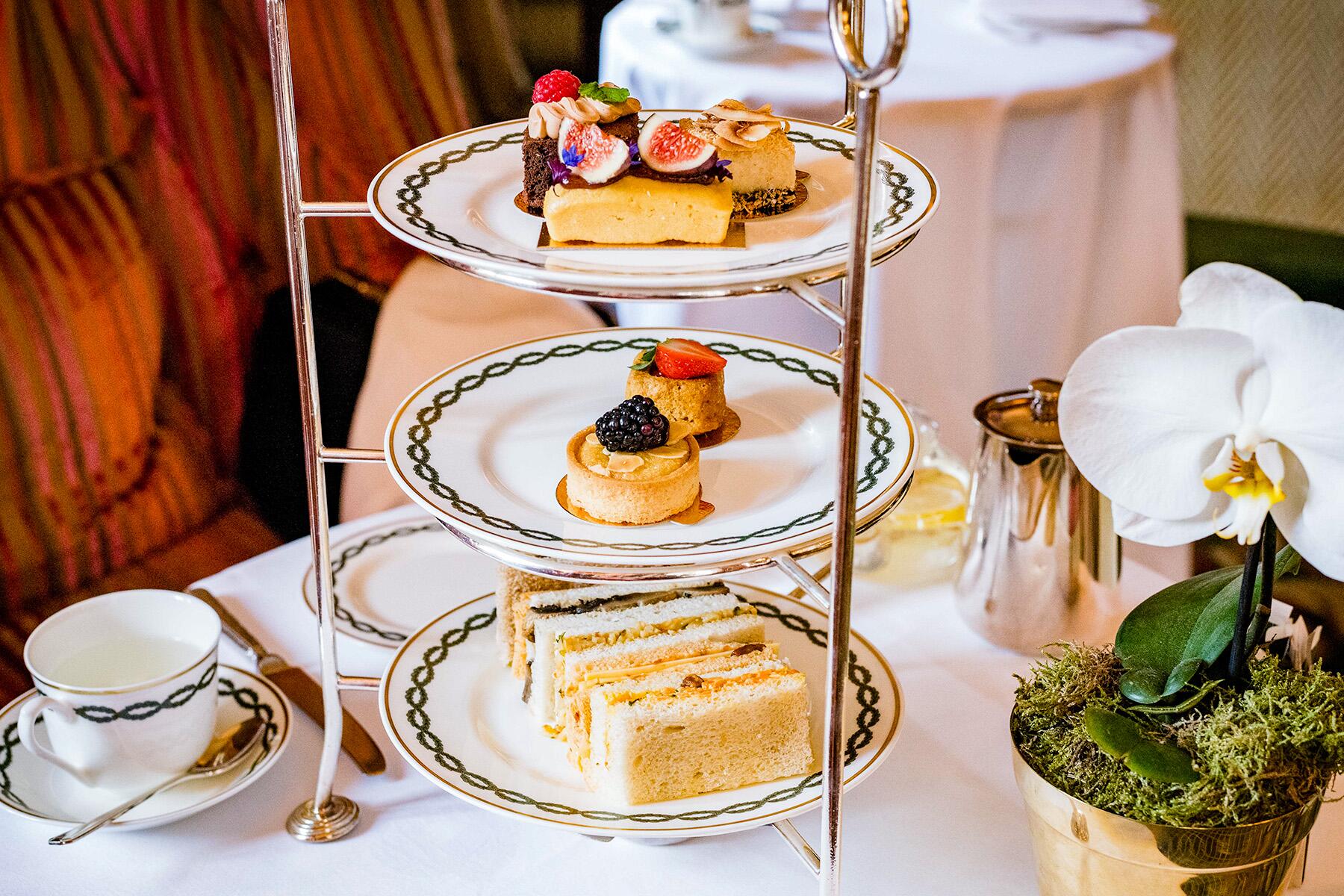In England, scone etiquette is a highly divisive topic.
With its notoriously elegant decorum, I anticipated my first afternoon tea in London would involve learning some etiquette. But the only instruction I received from my server at The Milestone Hotel was to make my way from the finger sandwiches on the bottom tray of the curate presented before me upwards to the sweet pastries on top.
Once I did, I finished the three-tier tray with freshly baked scones. Without thinking, I cut the pillowy scone in half and spread the silky clotted cream first, followed by the jam, just like I would apply butter before jam back home in Canada. As the server was clearing my plates, he said, “You know, some people believe the jam comes first?”
To my surprise, I learned this seemingly small detail of a British afternoon tea service is one of the most divisive topics in England. So I sought to learn more—where did the debate originate and most importantly, what is the correct approach: jam or clotted cream first?
The great British scone debate represents a historic rivalry between the two neighboring counties of Devon and Cornwall, according to Piero Sottile, Executive Pastry Chef at the Shangri-La The Shard, London. The ”Devon method” of applying clotted cream first is believed to have been established in the 11th century when the Earl of Devon served the country’s first ”cream tea” (the English tradition of having tea with scones, clotted cream, and jam).
Recommended Fodor’s Video
The ”Cornwall method,“ in contrast, originates from the neighboring county of Cornwall, where the Cornish believe jam should be spread on the scone first. From these two neighboring counties, a nationwide debate has carried on for centuries.
“The order in which clotted cream and jam are applied to scones has become a symbolic representation of local identity,” says Chef Sottile.
With my logic being that the clotted cream, like butter, should come first to moisten the scone, I was eager to understand the rationale behind applying jam before clotted cream. So I asked Mark Perkins, the Executive Pastry Chef behind Rosewood London’s beloved Art Afternoon Tea, why he personally favors the Cornwall method.
“I put the jam on first so it soaks into the scone, and then I can top it with loads of clotted cream,” he told me.

In this approach, the sweet jam acts as the primary flavor while the clotted cream is viewed as a luxurious topping, explains Chef Sottile, who prefers spreading the clotted cream first, but understands the logic of the Cornish method.
“The idea is that the cream is added last, almost like a crowning touch, allowing its richness to enhance the overall flavor.”
Perhaps this “crowning touch” effect explains why the late Queen reportedly preferred spreading the jam first.
For followers of the Devon method, the clotted cream, rather than the jam, is the star of the scone show.
“Spreading clotted cream first showcases its velvety richness and creamy texture and allows the cream to meld with the warm scone, imparting a luscious and indulgent quality,” says Chef Sottile. “A dollop of jam, when applied afterward, introduces a fresh burst of fruity sweetness, creating a delicious contrast and complimentary topping to the cream.”
At The Milestone Hotel—where I unknowingly exhibited the Devon method—Pastry Chef Amina Azeez validated my assumption that the cream would act like butter.
“The clotted cream replaces the butter and provides a rich and luscious base on which to sit the jam. The high butter fat content of clotted cream means it further enriches the eating quality of the scone.”
The pastry chef, who personally follows the Devon method, told me the trick is to dollop sufficient clotted cream to allow the formation of a small “hollow” in which to nestle the jam.

So what is the final verdict: jam or clotted cream first? The answer remains subjective. While both pastry chefs Sottile and Azeez report most guests of the Shangri-La The Shard and the Milestone Hotel spread the clotted cream before the jam, Shane Cox, the restaurant manager of the Rosewood London’s Mirror Room, observes more guests apply the jam first. All three hotels serve clotted cream and jam separate from the scones to let diners choose their own adventure.
Ultimately, there is no right or wrong way to eat this quintessentially British pastry; the choice is up to you.
"The ”Devon method” of applying clotted cream first is believed to have been established in the https://en.wikipedia.org/wiki/Cream_tea" target="_blank" rel="noopener">11th century when the Earl of Devon served the country’s first ”cream tea” (the English tradition of having tea with scones, clotted cream, and jam)."
Hmm, 600 years before tea was first available in Britain and the first Earl of Devon was created in the 12th century. It would be interesting to see any source for this.




My friend took me to Harrod's for tea. Scones and clotted cream... looked like biscuits and butter to me... scones with fruit... looked like biscuits with raisins. Nonetheless, the sandwiches were absolutely delicious!!! I didn't imagine that they would be so delicious.